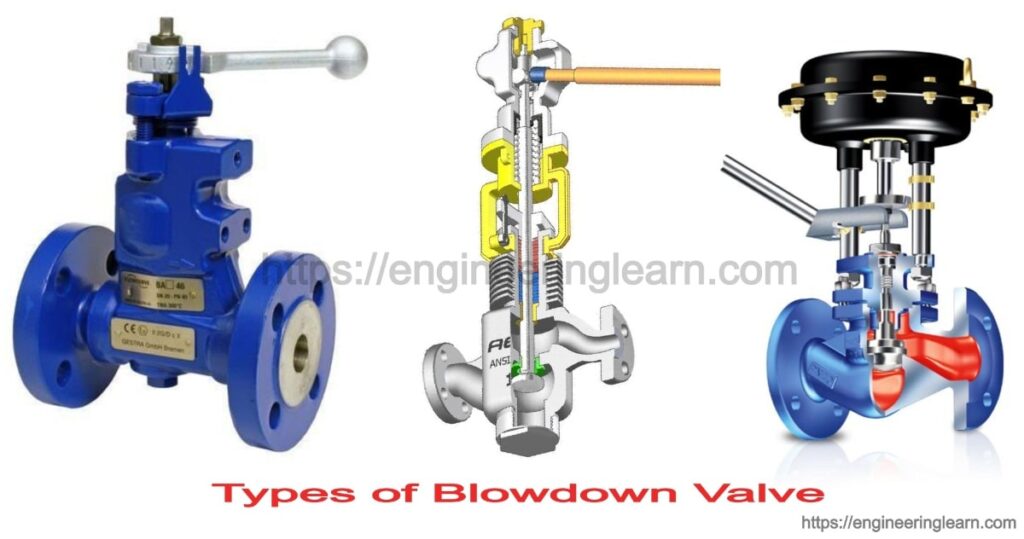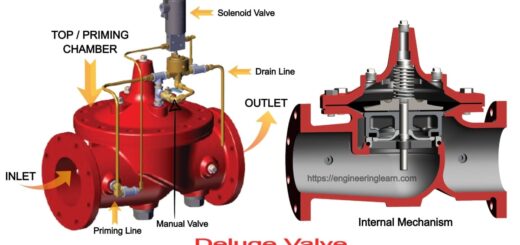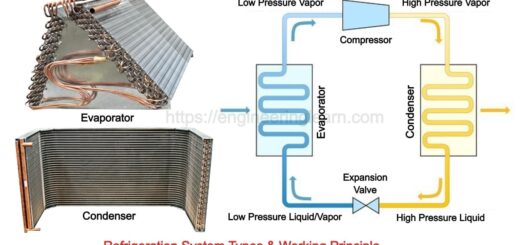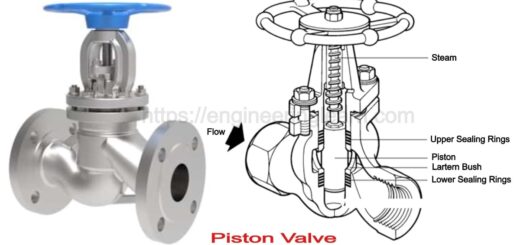Types of Blowdown Valve: Working, Operation, Uses, Applications, Advantages & Disadvantages

What is a Blowdown Valve?
Types of Blowdown Valve: Working, Operation, Uses, Applications, Advantages & Disadvantages :- Blow down valves are among the popular type of valves which are used for various applications. The most common function of the valves is to control the continuous flow of fluid in high differential pressure. They can maintain fluid tightness. These valves are used for draining liquid of some amount from equipment.
General Description of Blowdown Valve
In steam boiler water evaporates and convert to steam, and for continuous production of steam for fulfilling the requirement frequent replenishment of boiler feed water is needed. The feedwater dissolve some impurities in it and the continue evaporation of water results in damaging to the steam production in the boiler.
If blow down is not provided then the solid impurities will reach to its saturation and starts settling down in the boiler and the concentration of solid impurities are maximum where steam is produced around heat exchange surfaces. Precipitation results in the formation of scale deposits on the heat exchange surface and they thermally insulate the surface which reduce the rate of generation of steam and cause boiler metals to reach failure temperature.
They are attached to the equipment’s in which the working fluids have solid impurities. Such type of impurities does not dissolve in fluid and finally they are deposited over the surface of equipment which results in serious problems in the equipment operation.
Operation of Blowdown Valve
Normally they are attached with the equipment in process whose working fluid is water. When water have solid impurities and some water is continuously evaporated with some mechanism like vaporization in boilers or drafting in cooling towers then it increase the accumulation of solid impurities in the water left after the evaporation. If the solid impurities accumulation increases a lot then they start depositing at the surface of equipment and they results into the blockage of the path of liquid flow and then the processes in which heat transfer is required of the operation may face difficulties in their operation.
In case of boiler operations, impurities precipitation is highest at the location where water is converted in the steam. Thus the scale formed will act as insulating layer which deviate the flow of heat through equipment. When the scaling thickness increases the rate at which steam is being generated is reduces because the rate at which heat is flowing is reducing. Metal surface may also get damaged due to temperature increase if the metal surface due to the heat accumulation.
Applications of Blowdown Valve
The primary application of the blow down valve is to control the concentration of total dissolved solids and suspended solids in boiler. Blow down of boiler is a severe application which can leads to the wearing out of conventional valves as well as rapid erosion. The blow down rate are influenced by the boiler pressure, size of blow down line and the length of blow down line between boiler and the blow down vessel.
Using blow down valve can reduce the operational cost as well as less consumption of feed water, high heating efficiency. Once this valve was set then there is no requirement for regular operator intervention.
Working of Blowdown Valve
Two number of blow down valves are used in series in which one valve is used as the sealing valve and the second valve used as blow down valve. The sealing valve is opened at the starting and is closed at last. Both the valves are opened fully and rapidly in order to prevent the erosion on disk faces and on the seat. Care is taken in order to avoid the trapping rust or scale particles in valve by opening again the valve for flushing the particles through, if there is some resistance felt at the time of closing. The bottom blow down valves are generally replaced or rebuilt when the boiler is out of service for their maintenance.









